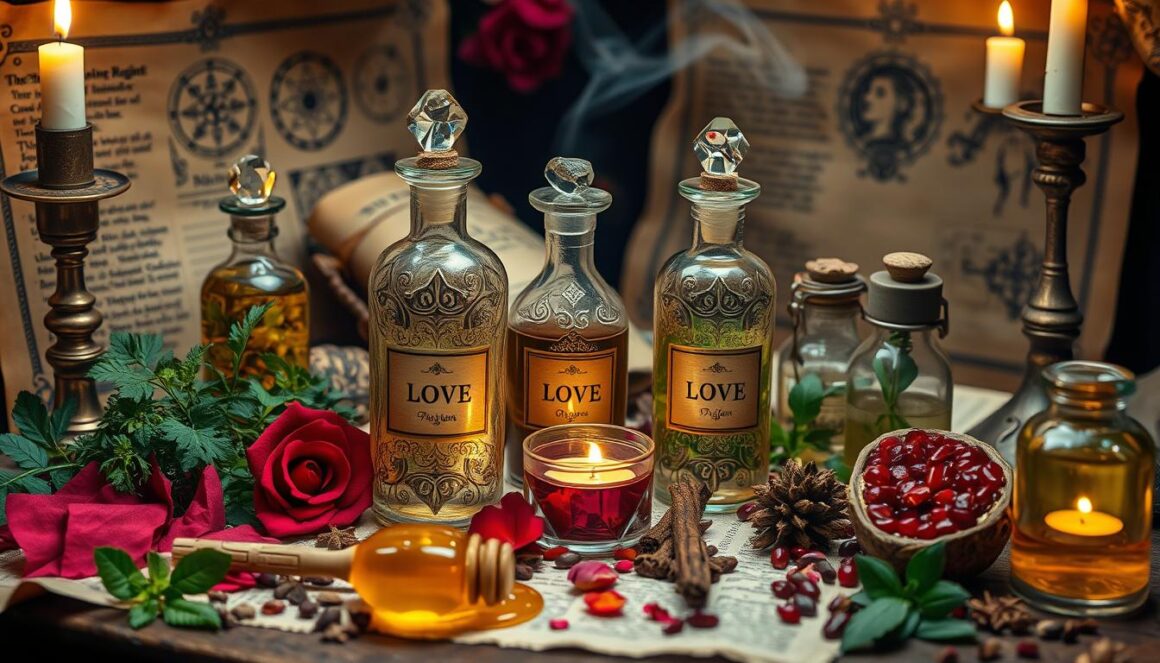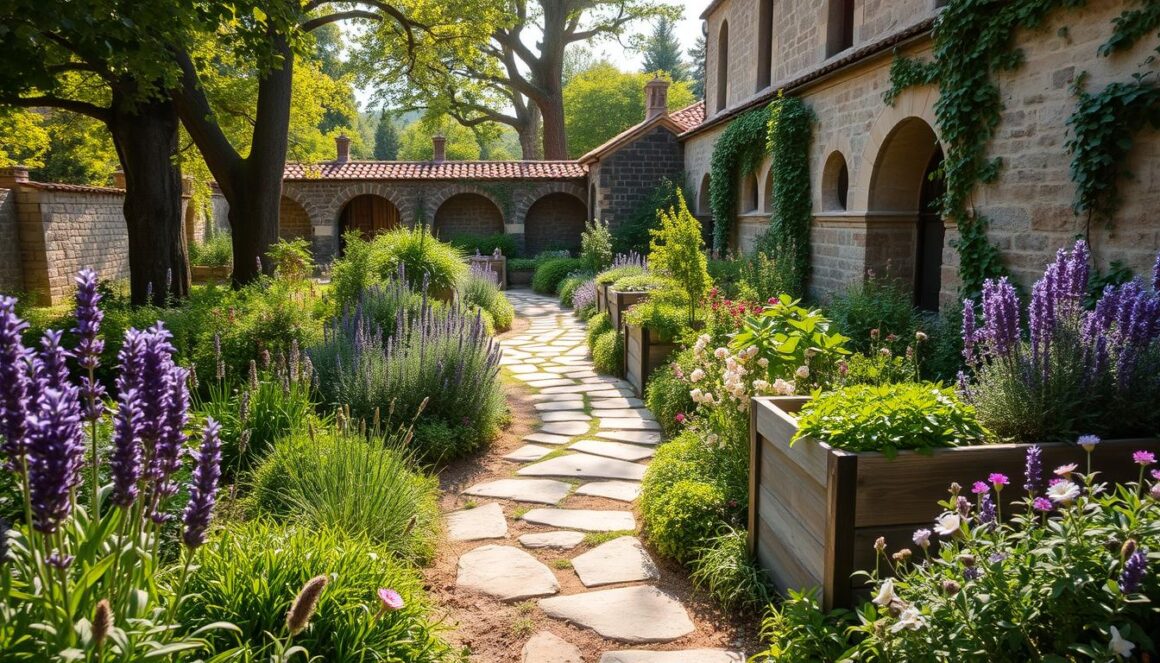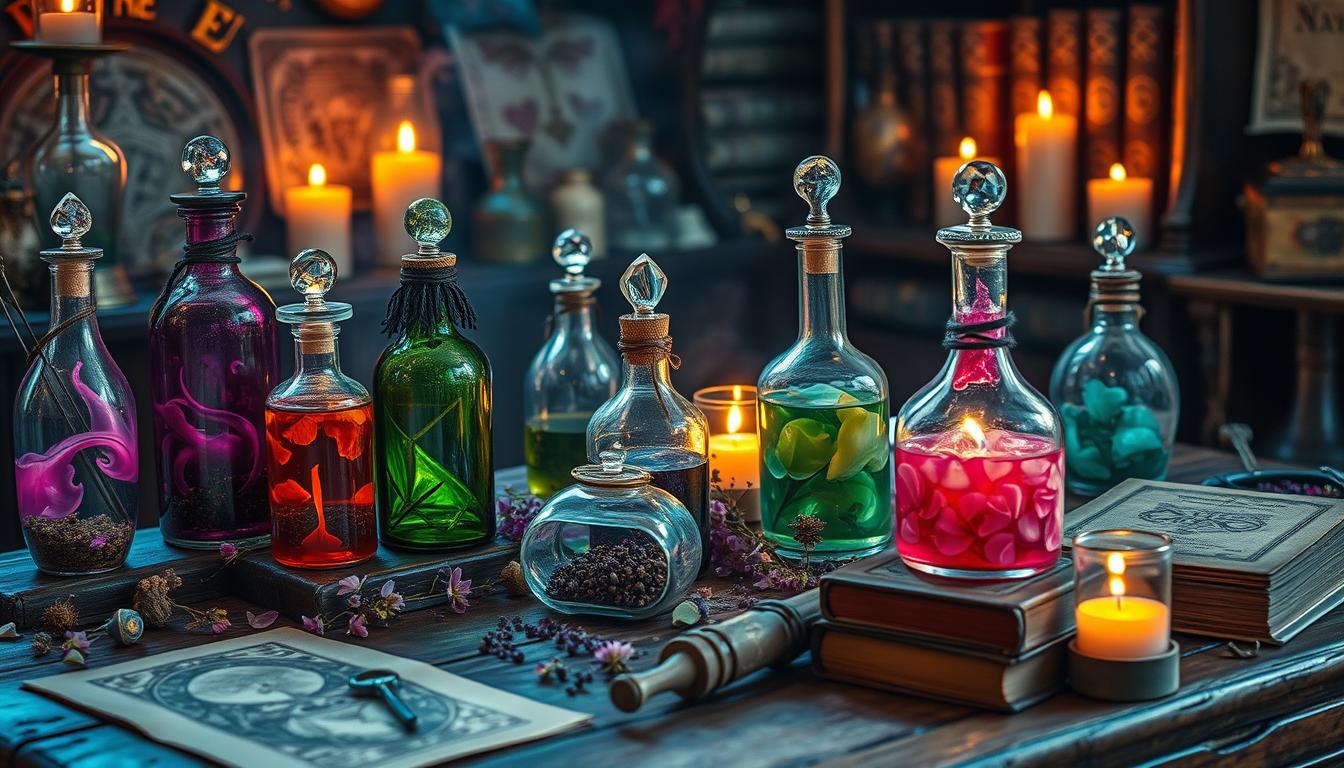Love potions have been around for centuries, helping people attract and keep romantic interests. These mixtures, known as philtres, were thought to have magical powers. They were believed to spark love, passion, and desire.
The word “philtre” comes from the Greek “philtron,” meaning love-charm. “Potion” comes from the Latin “potio,” which means a draught. Through history, these elixirs have been used in many ways, showing our deep desire for love and connection.
Key Takeaways
- Love potions have been a part of human culture for centuries, dating back to ancient civilizations.
- These concoctions, known as philtres, were believed to possess magical properties that could induce love, passion, and desire.
- The terminology “philtre” and “potion” have their origins in Greek and Latin, reflecting the global nature of these romantic elixirs.
- Ancient cultures across the world, including Greece, Rome, Egypt, and Asia, developed unique recipes and methods for crafting love potions.
- Modern equivalents of historical aphrodisiacs and love potions can be found in popular culture and marketing, though their efficacy is often questionable.
The Origins and Cultural Significance of Love Potions
Love potions have a long history, especially in ancient Greece and Rome. The Greek climate and nature inspired myths about love and desire. Gods like Dionysus and Pan were key figures in these stories.
In these times, love charms and rituals were not as common. This was because people were more open about sex. Yet, some plants and herbs were thought to boost love and desire.
Xenocrates, a Greek doctor, suggested using mallows sap as a love potion. Dioscorides of Cilicia recommended boy-cabbage roots soaked in goat’s milk for a sexual boost. People believed these items could change their love lives.
In the Middle Ages, making and using love potions was linked to witchcraft and alchemy. This led to many being accused and tried. The Renaissance brought a new interest in love potions, with scholars like Paracelsus exploring their creation.
Today, love potions still capture our imagination in movies, books, and products. From essential oils to modern medicines, the idea of love charms and rituals is still captivating. It shows how our history and culture are deeply connected to our desire for love.
Ancient Love Potions: Recipes and Ingredients from History
For centuries, people have searched for magical brews and ancient aphrodisiacs to spark romance. These ancient potions used exotic ingredients, some now rare or unknown. Satyrion, possibly like the orchis plant, was key in Greek and Roman love potions.
Ingredients like mandrake root, henbane leaves, areca nut, and yellow hemp were common. These plants had alkaloids that could mimic the thrill of love, like a faster heart rate and feeling euphoric. But, these ingredients were also very toxic, making these potions risky to drink.

In Medieval times, Spanish and Balkan potions included sparrow heads and donkey testicles. European potions used ground bones, pubic hair, and menstrual blood. These ingredients seem strange today, but show how far people went for love.
Medieval Monastery Gardens: The Source of Romance
In the medieval era, monastery gardens were key in growing herbs for love potions. At Mount Grace Priory, monks grew plants believed to boost love and induce hallucinations. Sea holly and rosemary were among these plants, known for their romantic properties.
These gardens also had mandrake, deadly nightshade, and henbane. These were used in potions for anesthesia and to spark visions during meditation. The monks’ hard work made these gardens a treasure trove of medieval love elixirs.

Medieval monastery gardens show how spirituality, medicine, and love were intertwined. These places not only grew plants for desire but also explored the mystical bond between humans and nature.
Famous Love Potions Through Literature and Legend
Love potions have fascinated us for centuries. They appear in ancient Greek myths and medieval romances. The goddess Aphrodite was often tied to these potions in Greek stories. Roman poets like Ovid also wrote about them, showing our deep interest in love magic.
The story of Tristan and Isolde is famous for its love potion. These stories show how literary love potions and mythical elixirs capture our hearts. They have always intrigued us, across different times and places.
Stories of love potions include the Spanish fly and the magical communion host. These tales mix hope and danger. Whether real or magical, literary love potions and mythical elixirs show our endless quest to understand love.
The Science Behind Historical Love Elixirs
Love potions have always fascinated people, promising to spark passion and create lasting bonds. But what’s the real science behind these ancient concoctions? It’s a mix of chemistry, physiology, and psychology. Many ingredients in these potions actually had real effects on the body.
The foxglove flower, for example, has compounds that can change heart rate and stimulate the nervous system. This might make someone feel more alert. Rauwolfia serpentina root, on the other hand, has substances that can make you sleepy and lower blood pressure. This could help someone feel more relaxed and close to others.
Mandrake root and henbane contain toxins that can block the nervous system. This might make someone feel excited, but it’s dangerous. The ancient Greeks were among the first to mix herbs and chemicals to create love potions.
As we learn more, we find that ancient potions and modern science are connected. Hormones like oxytocin play a big role in love and bonding. Even foods like chocolate, which were once thought magical, can change our mood because of their chemistry.
Modern Equivalents and Natural Aphrodisiacs

Our view on love potions has changed over time. Now, we look for safer, natural options. Foods like chocolate, oysters, and spices are thought to have mild effects. They help spark passion in a gentle way.
Essential oils and aromatherapy are also used to create romantic settings. They help set the mood for love.
Herbal supplements, like maca root and ginseng, are seen as natural ways to boost libido. But, their effectiveness is debated. They are not as strong as the old love potions. Still, they offer a safer way to explore romantic feelings.
Old love potions were full of mystery and myths. But, science is now uncovering the truth behind love and sex. Researchers are looking into how compounds like β-caryophyllene affect love. This search for natural love boosters is fascinating.
Conclusion
The journey of love potions through history shows our deep interest in love and attraction. Ancient civilizations like Egypt, Greece, and Rome used them. Later, the medieval and Renaissance periods saw more complex potions.
Today, we have safer, natural love potions. They use pheromones and mood-boosters instead of harmful ingredients. This change shows how our understanding of love has grown.
Love potions have always been a mix of culture, science, and our desire for love. Now, we see them in perfumes and colognes, adding a magical touch. Scientists are still studying how pheromones affect us, keeping the idea of love potions alive.
The tale of love potions is a symbol of our never-ending search for love. It shows our creativity and determination in finding natural ways to spark romance and desire.




